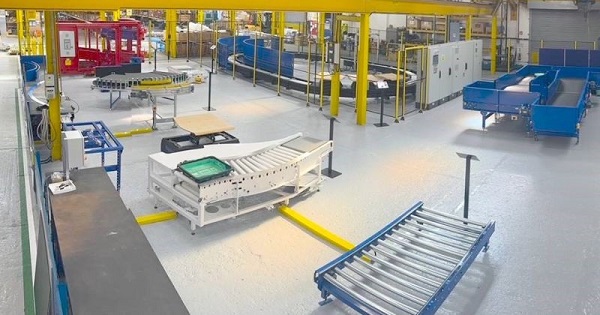5S Workplace organization
5S Workplace Organization is a methodology developed in Japan that helps create a clean, organized, and efficient work environment. It’s widely used in manufacturing, offices, and service industries, and forms the foundation for many lean management and continuous improvement systems.
✅ What is 5S?
The 5S stands for five Japanese words that start with the letter “S”, each representing a step in the organization process:
Seiri (Sort)
The initial phase of the 5S methodology, Seiri (Sort), emphasizes the systematic removal of all non-essential items from the workplace. This step entails identifying materials and tools necessary for routine operations and eliminating those that are redundant or infrequently used. A decluttered environment contributes to reduced confusion, lower risk of errors, and improved operational efficiency. Furthermore, it facilitates the early detection of irregularities by creating a more orderly and visually controlled workspace.
5S Operational Form: Seiri (Sort)
| Step | Objective | Key Activities | Responsible Person(s) | Frequency | Verification Method |
|---|---|---|---|---|---|
| Seiri | Remove unnecessary items from the workspace | Identify required vs. unnecessary items; remove or relocate unused items | Department Supervisor | Monthly | Visual inspection; checklist |
Seiton (Set in Order)
Seiton (Set in Order) involves the systematic arrangement of essential items to ensure they are readily locatable, accessible, and returned to their designated positions after use. Each item should have an assigned location, clearly identified through labeling and logically organized in accordance with the workflow. This step frequently employs visual management tools such as labels, signage, and shadow boards. The primary objective is to reduce time wasted in searching for tools or materials, enhance process efficiency, and guarantee the consistent availability of required resources.
5S Operational Form: Seiton (Set in Order)
| Step | Objective | Key Activities | Responsible Person(s) | Frequency | Verification Method |
|---|---|---|---|---|---|
| Seiton | Arrange necessary items for easy access | Organize tools and materials for workflow efficiency; label storage locations | Department Supervisor | Monthly | Visual inspection; layout audit |
Seiso (Shine)
Seiso (Shine) entails the comprehensive cleaning of the workplace and the integration of cleanliness into daily operational routines. This step extends beyond mere aesthetics; it facilitates the early identification of defects such as wear, leaks, or misalignments that might otherwise remain undetected. Maintaining a clean work environment enhances employee morale, mitigates health and safety risks, and cultivates a sense of pride and responsibility among personnel. The sustained practice of cleanliness depends on the implementation of regular cleaning schedules and clearly defined accountability.
5S Operational Form: Seiso (Shine)
| Step | Objective | Key Activities | Responsible Person(s) | Frequency | Verification Method |
|---|---|---|---|---|---|
| Seiso | Clean the workspace and equipment | Assign cleaning tasks; inspect and clean equipment; report abnormalities | All Staff | Weekly | Cleanliness checklist; observation |
Seiketsu (Standardize)
Seiketsu (Standardize) ensures the consistent maintenance of practices established in the initial three steps—Sort, Set in Order, and Shine. This is achieved through the implementation of well-defined standards, procedures, and schedules. Tools for standardization, including visual controls, checklists, and training programs, facilitate employee understanding and adherence to their roles in sustaining workplace organization. This step establishes a robust foundation for continuous improvement and effectively integrates the 5S methodology into the organization’s routine operations.
5S Operational Form: Seiketsu (Standardize)
| Step | Objective | Key Activities | Responsible Person(s) | Frequency | Verification Method |
|---|---|---|---|---|---|
| Seiketsu | Maintain standards for Seiri, Seiton, and Seiso | Develop visual controls; document standard work; train employees on 5S practices | Quality Coordinator | Quarterly | Internal audit; 5S evaluation checklist |
Shitsuke (Sustain)
The final step, “Sustain,” seeks to establish the 5S methodology within the organizational culture by promoting discipline, continuous improvement, and individual accountability. It is imperative that employees receive comprehensive training, sustained support, and motivation to consistently adhere to the prescribed standards. This phase encompasses the execution of regular audits, the implementation of employee recognition initiatives, and the active involvement of leadership to ensure the enduring institutionalization of 5S practices, rather than their treatment as transient measures. When diligently maintained, the Sustain phase facilitates continued advancements in operational efficiency, workplace safety, and product quality.
5S Operational Form: Shitsuke (Sustain)
| Step | Objective | Key Activities | Responsible Person(s) | Frequency | Verification Method |
|---|---|---|---|---|---|
| Shitsuke | Develop a culture of discipline and 5S habit | Promote adherence; conduct regular training; recognize compliance and improvement | Management Team | Bi-annually | Performance review; employee feedback |
Purpose of 5S
-
-
Improving productivity
-
Reducing waste
-
Enhancing safety
-
Creating a more pleasant and efficient work environment
-
Supporting visual management
-
Building a foundation for lean manufacturing and ISO systems (like ISO 9001 or IATF 16949)
-
✅ Benefits of 5S Implementation
-
-
To reduce time wastage:
Establishing systematically organized storage with precise labeling and designated locations enables personnel to efficiently retrieve necessary tools and materials, thereby significantly minimizing non-productive time and enhancing operational efficiency.To reduce accidents and workplace injuries:
Enforcing rigorous housekeeping standards, including the routine identification and elimination of potential hazards, mitigates risks and contributes to a safer work environment with fewer incidents.To improve quality and reduce errors:
Implementing standardized operational procedures supported by regular audits and comprehensive employee training ensures uniformity in task execution, resulting in enhanced quality control and a reduction in errors.To increase employee satisfaction and engagement:
Cultivating an organized and orderly workplace, coupled with actively involving employees in continuous improvement activities, fosters a sense of ownership and commitment, thereby improving workforce morale and engagement.To enhance company image (especially important during audits or client visits):
Maintaining a visibly clean and well-ordered facility demonstrates organizational discipline and operational excellence, positively impacting perceptions during external audits and client evaluations.
-
✅ Where 5S is used
-
Manufacturing lines:
Enhances workflow efficiency and safety by ensuring the accessibility of tools and materials, thereby reducing downtime and facilitating prompt resolution of issues to maintain consistent product quality.Laboratories:
Promotes accuracy and reliability through systematic organization of equipment and samples, minimizing contamination risks and ensuring compliance with regulatory standards to expedite testing processes.Warehouses:
Maximizes storage utilization and accelerates inventory retrieval, while reducing errors in shipping and receiving, and enhancing safety by maintaining unobstructed aisles.Offices:
Improves operational productivity and professionalism by minimizing clutter and optimizing document management, thereby fostering effective communication and collaboration.Maintenance and tool rooms:
Ensures proper maintenance, organization, and storage of tools, which reduces repair times, prevents loss or damage, and supports adherence to safety protocols.Hospitals and clinics:
Maintains sterile and well-organized environments that enhance patient safety, expedite access to medical supplies, reduce operational errors, and improve staff efficiency.Retail stores:
Optimizes product presentation and inventory management to enhance customer experience and employee productivity, while mitigating inventory shrinkage and restocking inaccuracies.
✅ Example Activities
-
Color-coded labeling systems
-
Floor marking for storage zones
-
Shadow boards for tools
-
Cleaning checklists
-
Regular 5S audits
-
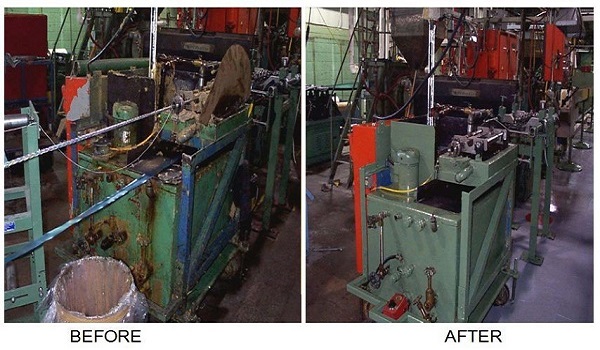
5S Workplace Organization is a methodology developed in Japan that helps create a clean, organized
Integration of Teamwork in the Implementation of the 5S Methodology
Seiri (Sort)
The effective execution of the Sort phase requires collaborative participation among team members to collectively identify and eliminate non-essential items from the workplace. Team-based decision-making facilitates consensus on what constitutes necessary resources, thereby promoting shared accountability and operational clarity.
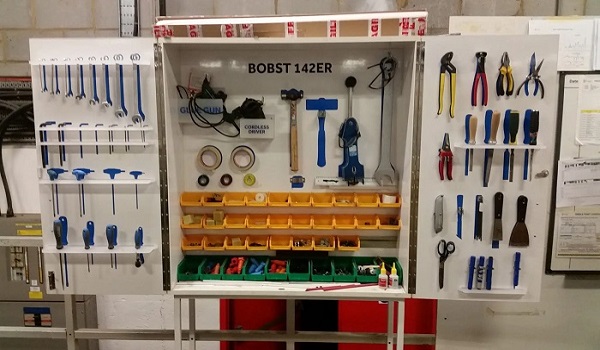
Seiton (Set in Order)
The effective implementation of the Set in Order phase requires coordinated team efforts to systematically arrange essential tools and equipment in clearly designated and easily accessible locations. Through collaborative planning, team members establish logical storage layouts and apply visual management elements such as standardized labels, signage, and shadow boards. This structured approach facilitates prompt retrieval, minimizes operational delays, and enhances overall workflow efficiency.
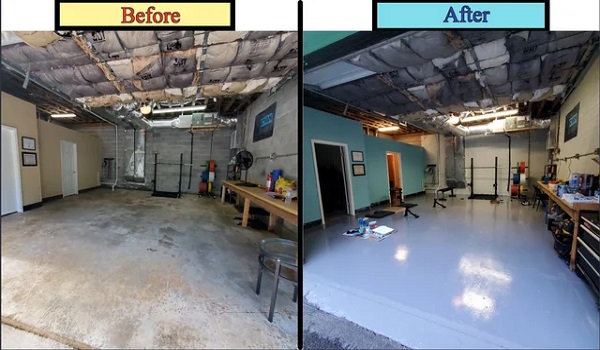
Seiso (Shine)
The successful execution of the Shine phase necessitates the allocation of specific cleaning responsibilities among team members and the integration of cleanliness into routine operational practices. Through collective engagement, employees can proactively identify potential issues—such as leaks, structural damage, or equipment misalignments—before they escalate. This shared responsibility for workplace maintenance supports a safe, efficient, and high-morale work environment.
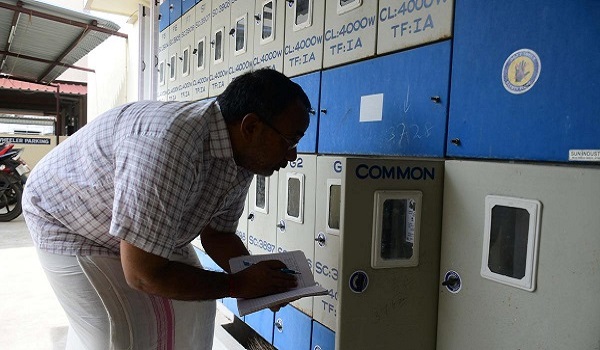
Seiketsu (Standardize)
The Standardize phase necessitates the collaborative development and consistent implementation of procedures, visual controls, and checklists. Teams actively engage in defining best practices derived from the preceding three phases and contribute to their institutionalization throughout the organization. Standardization initiatives, reinforced through collective training and mutual accountability, foster enhanced consistency and quality in operational performance.
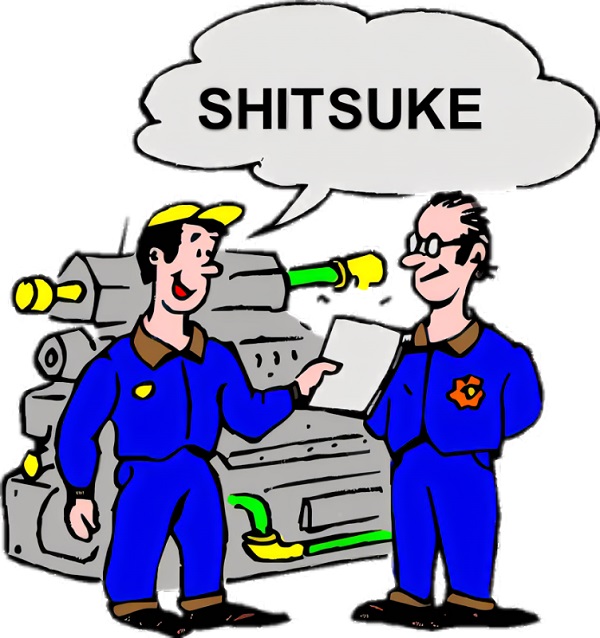
Shitsuke (Sustain)
The Sustain phase relies on collective discipline, shared commitment, and ongoing continuous improvement. Teams maintain adherence to 5S standards through systematic audits, structured feedback mechanisms, and reciprocal encouragement. Leadership reinforces this phase by formally recognizing team contributions, supporting comprehensive training programs, and embedding 5S principles into the organizational culture as a sustained, long-term practice rather than a transient initiative.
Relationship Between the 5S Methodology and the Requirements of ISO 9001, ISO 14001, and ISO 45001 Standards
Alignment of 5S with ISO 9001: Quality Management Systems
The 5S methodology plays a pivotal role in satisfying the requisites of ISO 9001 by fostering a highly organized and efficient operational environment, thereby supporting product quality and enhancing customer satisfaction. This methodology underpins compliance with key ISO 9001 clauses, including those pertaining to operational control, resource management, and continual improvement.
Illustration:
-
The Sort and Set in Order phases systematically eliminate unnecessary items and arrange essential resources to reduce process variability and minimize defects.
-
The Standardize phase ensures the establishment and maintenance of consistent work procedures, facilitating audit preparedness, process traceability, and ongoing quality enhancement.
-
Results of Implementing 5S in Quality Management System (ISO 9001)
-
Enhancing process consistency and standardization
-
Reduced defects and errors
-
Improved product quality and customer satisfaction
-
Increased operational efficiency and productivity
-
Streamlined workflow and reduced process variability
-
Integration of 5S with ISO 14001: Environmental Management Systems
The implementation of the 5S methodology significantly contributes to the attainment of ISO 14001 compliance by fostering environmentally responsible practices through the maintenance of orderly and clean workplaces that effectively reduce waste and minimize environmental risks. This methodology aligns with the ISO 14001 framework, particularly in areas concerning operational control, pollution prevention, and the continual enhancement of environmental performance.
Illustration:
-
The Sort phase aids in identifying and removing materials that may pose environmental risks, thereby minimizing potential sources of pollution.
-
The Shine phase institutionalizes rigorous cleaning protocols which assist in the early detection and prevention of spills, leaks, and contamination incidents.
-
The Sustain phase cultivates sustained environmental awareness and accountability among personnel, embedding environmental responsibility within organizational culture.
-
Results of Implementing 5S in Environmental Management System (ISO 14001)
- Minimizing waste generation and resource consumptionImproving control over environmental hazards and pollution prevention
Enhancing compliance with environmental regulations
Promoted sustainable workplace practices
Supported continual improvement of environmental performance
- Minimizing waste generation and resource consumptionImproving control over environmental hazards and pollution prevention
Correlation of 5S with ISO 45001: Occupational Health and Safety Management Systems
The 5S methodology serves as a foundational element in achieving compliance with ISO 45001 by systematically facilitating the identification, evaluation, and control of workplace hazards within a meticulously organized and maintained environment. This approach aligns with the core requirements of ISO 45001, encompassing comprehensive risk assessment, implementation of hazard mitigation strategies, and the promotion of proactive employee engagement in occupational health and safety management systems.
Illustration:
-
The Set in Order phase guarantees the safe and logical placement of tools and equipment, significantly reducing accident risks.
-
The Shine phase facilitates proactive identification of potential hazards such as equipment wear or leaks, enabling timely corrective actions.
-
The Sustain phase reinforces a culture of safety through systematic audits, continuous training, leadership involvement, and recognition programs.
-
Results of Implementing 5S in Occupational Health and Safety Management System (ISO 45001)
-
Reducing workplace accidents and injuries
-
Improving hazard identification and risk control
-
Enhancing compliance with health and safety regulations
-
Promoting a safer and healthier work environment
-
Increasing employee awareness and participation in safety programs
-

